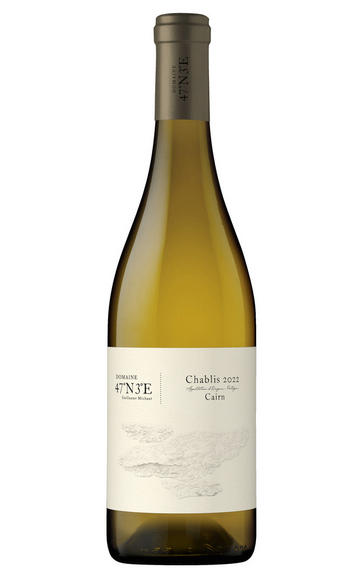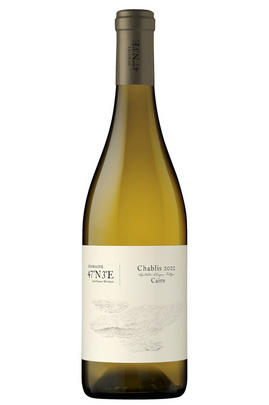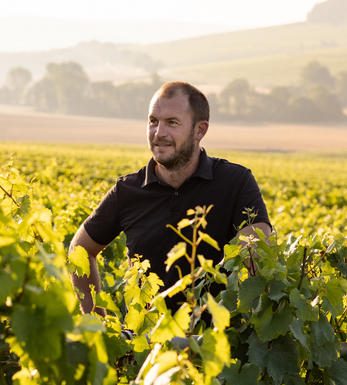
2022 Chablis, Cairn, Domaine 47°N 3°E, Guillaume Michaut, Burgundy

About this WINE

Domaine 47°N 3°E
Guillaume Michaut is a producer from Chablis, France. His grandfather was an early believer in the wines of Chablis and worked proudly to expand the Chablis appellation to his village of Beines and beyond. By the 1960s, he could pass a rather large holding of vineyards down to his sons.
Guillaume worked alongside his father and uncles in the vineyards as a teenager and joined the family domaine in 2004. However, after his father passed away, Guillaume realised that his vision was starkly different from that of his uncles and decided to set out on his own with his small share of family vines back in 2018. These vineyards represent just over one hectare altogether: 0.4 hectares of Chablis in Vau Brou, which he helped plant in 2000, and a 0.6-hectare block in the Premier Cru of Beauroy, which stretches from Beines nearly to the town of Chablis.
Michaut’s parcel was planted in 1980 and is located more precisely in the lieu-dit Côte de Savant, found just outside of Beines and across from the retention lake that his grandfather helped create in the 1960s. Recently, Guillaume added a little over two hectares of Petit Chablis that he planted in 2020. After working a year-long internship with Nicolas Maillet in the Mâconnais, Guillaume developed an interest in organic farming and low-intervention winemaking. Equally as important, he adopted a winemaking philosophy that respects the terroir and the vineyard over the process and the winemaker.
Setting out on his own was an opportunity to implement this belief. This began with promoting the place (rather than himself) by naming his domaine 47 N 3 E, which refers to the longitude and latitude of his hometown of Beines. In the cellar, all wines are vinified with native yeasts and aged without sulfur, though a small amount is always added at bottling. The Chablis is vinified and aged entirely in stainless steel tanks.
He produces two Premier Cru wines from Beauroy and Côte de Savant. Fruit for these cuvées comes from the same vineyard, which can be labelled as Beauroy or Côte de Savant. Beauroy is aged in stainless steel, while the Côte de Savant is fermented and aged in 500L oak demi-muids.

Chablis
Chablis lies further north than the rest of Burgundy, located about halfway between Beaune and Paris; it’s actually not all that far from Champagne. The wines here – exclusively whites from Chardonnay – differ in style from other white Burgundies: they tend towards steeliness and flintiness.
The Chablis region is an island of vines lying amid the forests and pastures of the Yonne département. In the heart of Chablis, the soils are marl (clay-limestone) of a particular kind – Kimmeridgian – containing traces of marine fossils. For many, the classic aroma and flavour profile of Chablis is built around seashell and an iodine, marine character imparted by the soil.
As elsewhere in Burgundy, there’s a hierarchy in Chablis. Grand Cru represents the top tier, although it accounts for just one per cent of overall Chablis production. The Grand Cru vineyards rise above the eponymous town in an impressive sweep, sloping south. These are sunny sites, ranging in elevation from 100 to 250 metres above sea level. The wines are deep and powerful, benefitting hugely from bottle age after release. The best examples can age for up to 20 years. Over time, their colour evolves from greenish gold to a light yellow, and they develop real aromatic complexity.
Unlike the other tiers, it’s not uncommon for Grand Cru Chablis to see new oak. As a result, its flavour profile is perhaps more comparable to the Côte d’Or than the rest of Chablis. For something more classically “Chablis”, there’s the Premiers Crus. Style and quality can vary, depending on the climat and the producer. Whether floral or more mineral, the best examples are seriously impressive and represent the hallmark style of the region – they can also offer real value for money. These are structured wines with the capacity to age for 10 to 15 years.
The next tier – accounting for most of the region’s output – is labelled simply as “Chablis”. These are steely, clean and lean whites with aromas of green apples and lemon, intended for early drinking. As ever in Burgundy, there are exceptions: well-made examples by top growers from vineyards abutting the Premiers Crus can be age-worthy.
Finally, there’s Petit Chablis: everyday wines, generally from vineyards planted on higher slopes. Petit Chablis accounts for around one-fifth of all Chablis produced. These wines typically come from Portlandian limestone, known to produce a fruitier, simpler wine than Chablis.

Chardonnay
Chardonnay is often seen as the king of white wine grapes and one of the most widely planted in the world It is suited to a wide variety of soils, though it excels in soils with a high limestone content as found in Champagne, Chablis, and the Côte D`Or.
Burgundy is Chardonnay's spiritual home and the best White Burgundies are dry, rich, honeyed wines with marvellous poise, elegance and balance. They are unquestionably the finest dry white wines in the world. Chardonnay plays a crucial role in the Champagne blend, providing structure and finesse, and is the sole grape in Blanc de Blancs.
It is quantitatively important in California and Australia, is widely planted in Chile and South Africa, and is the second most widely planted grape in New Zealand. In warm climates Chardonnay has a tendency to develop very high sugar levels during the final stages of ripening and this can occur at the expense of acidity. Late picking is a common problem and can result in blowsy and flabby wines that lack structure and definition.
Recently in the New World, we have seen a move towards more elegant, better- balanced and less oak-driven Chardonnays, and this is to be welcomed.


Buying options
Add to wishlist
Description
This is a special cuvée made from a 0.39-hectare plot of vines planted in 2000 in a tiny valley in Beine. Fully ripe grapes are fermented in tank and then aged in a mix of tank and new oak barrels. This is floral and delicate with a creamy texture and some vanilla oak, which will integrate with time. All is kept in check with a stinging acid spine.
Drink 2025 - 2030
Berry Bros. & Rudd
wine at a glance
Delivery and quality guarantee